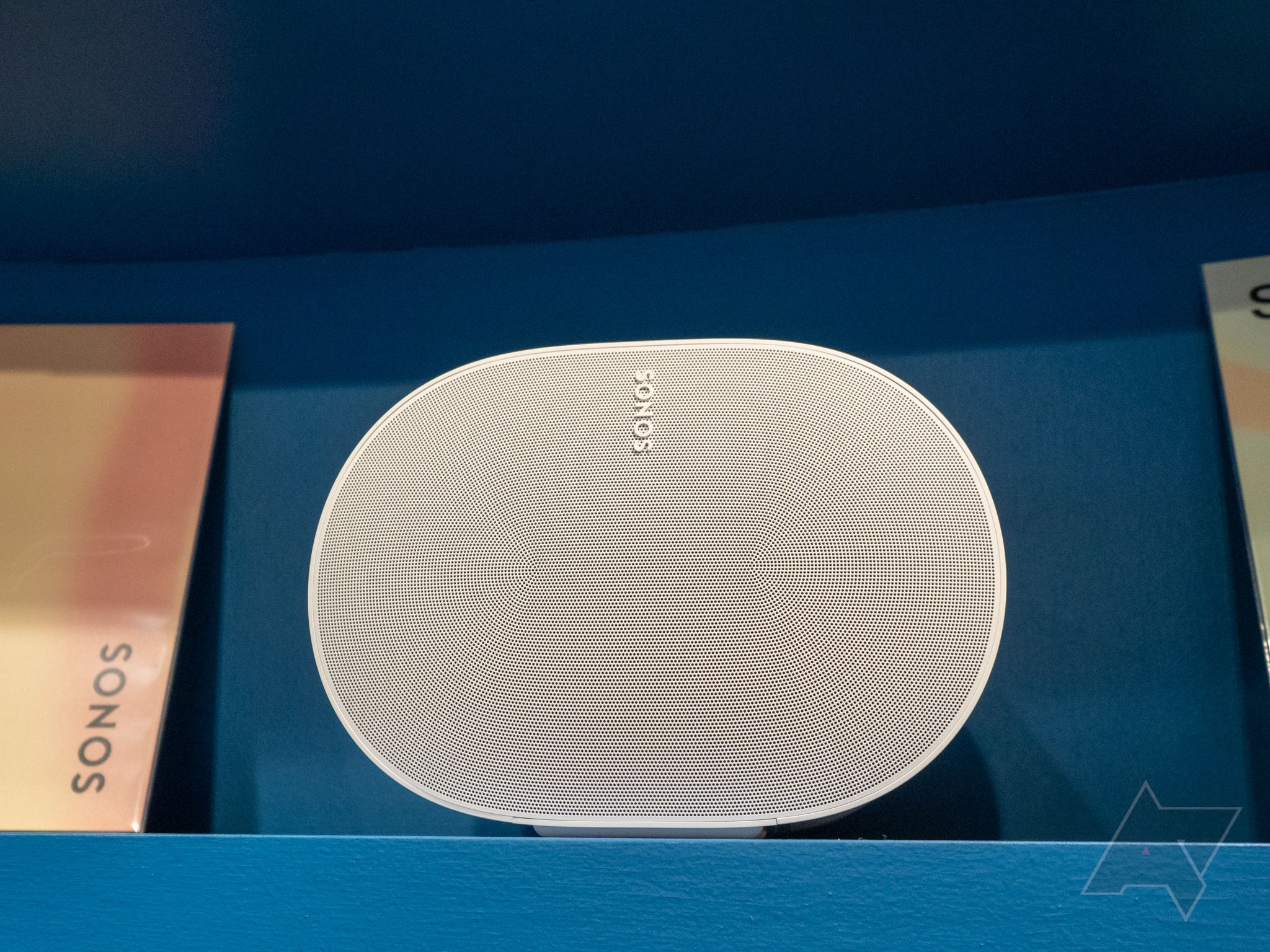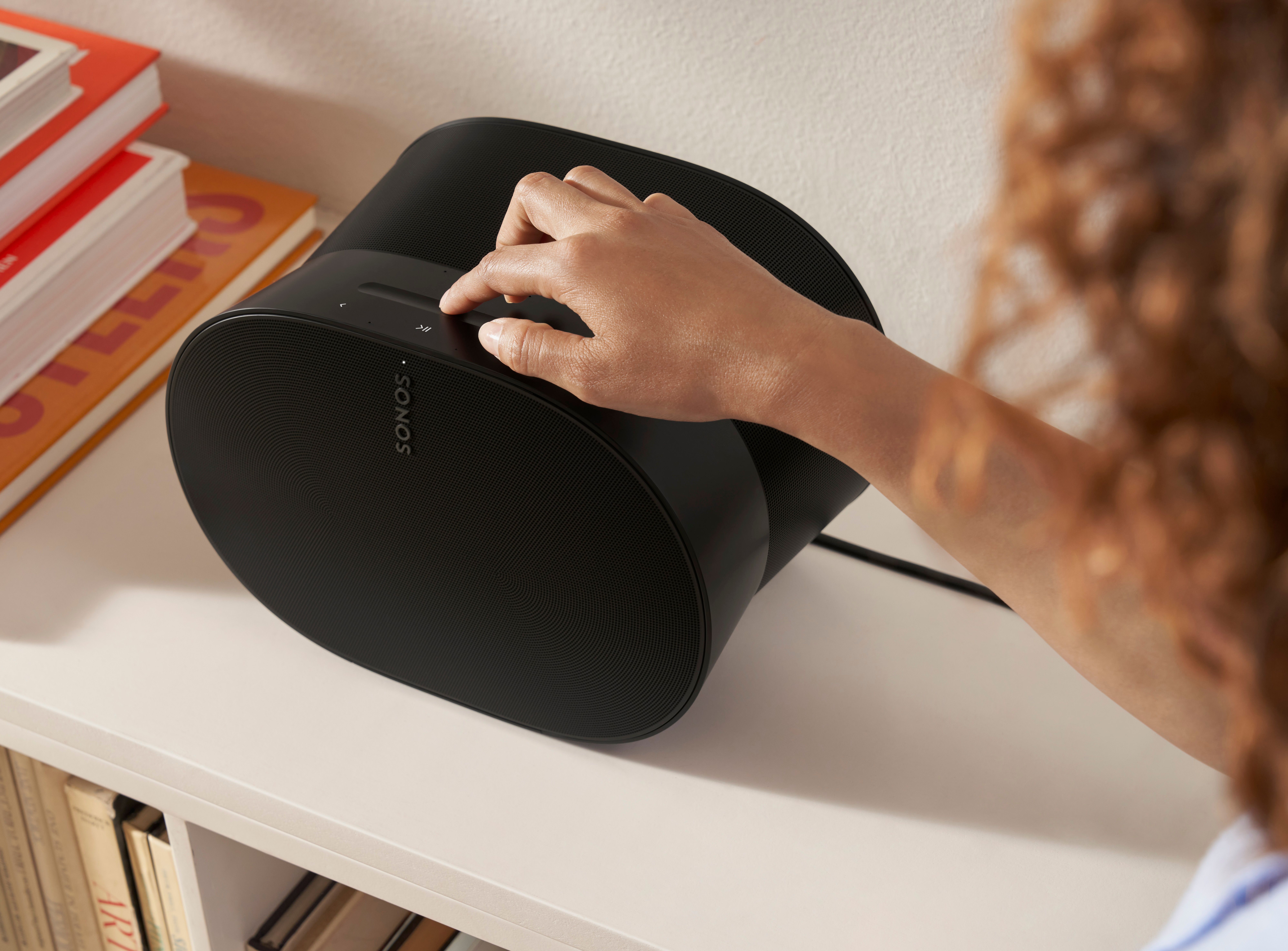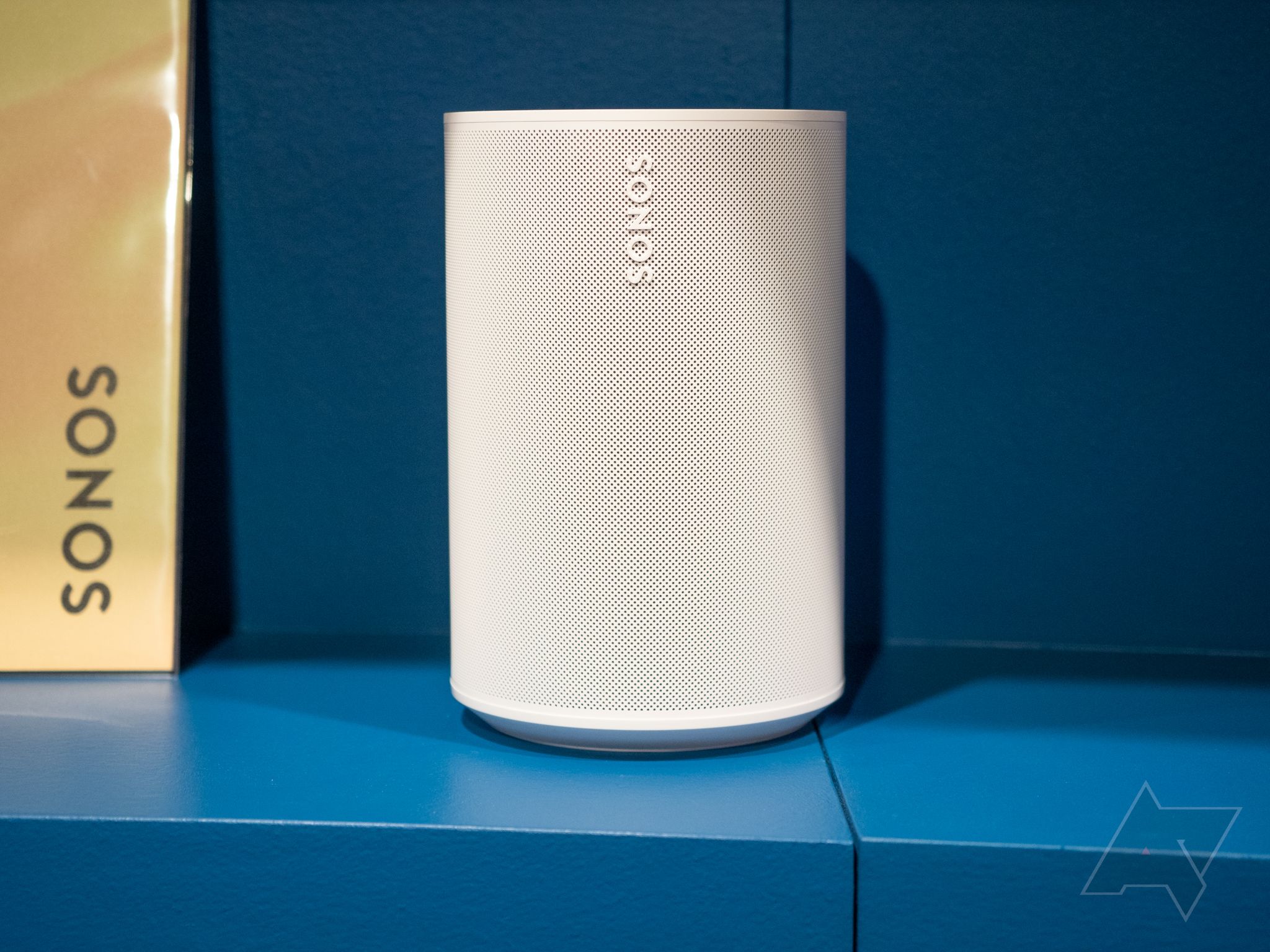Sonos is back in the standalone speaker game. After spending the last few years focusing its attention on where everyone else was during the pandemic, the television, Sonos is releasing two new standalone speakers, the Era 100 and Era 300, at the end of March, for $249 and $449, respectively. And while the Era 100 is the de facto replacement for the now 10-year-old Play:1 (which was itself succeeded by the Sonos One in 2017 and ever-so-slightly upgraded to the Gen 2 in 2019), the Era 300 is its own interesting mishmash of Sonos products past and present.
It's not quite a Play:3 successor — Sonos made that very clear to me during an interview at a New York-based launch event in February — but its size, shape, and focus on filling the average-sized room with exquisite, directional sound makes it feel like one. These could be the new smart speakers to beat.
Era 300
The Era 300 is really the flagship here: its concave body curves into an hourglass in the middle, giving it both an elegance and a discomfiting illusory nature, depending on your vantage point. The top capacitive controls have been overhauled from previous Sonos speakers, a valley now carved out for sliding volume controls where before it was just flat, making it easier to touch-feel your way to raising or lowering the volume. Behind the speaker sits a physical mute switch for the beamforming microphones — Alexa and Sonos Voice Control support only, no Google Assistant for reasons Sonos claims have nothing to do with ongoing litigation and everything to do with an API change on Google's end — and, new to the company's immobile line, a Bluetooth pairing button, which was a welcome sight, and I share that feeling with many other Sonos users, I'm sure.
The remaining I/O is a solo USB-C port, a multipurpose input that connects to a sold-separately set of accessories that offer Ethernet, line-in, or both (pricing for those is coming). The Bluetooth connectivity is welcome, especially after enjoying the Move and growing frustrated with the Roam over the past few years; the need to buy a dongle to access Ethernet, which was built into all previous standalone Sonos speakers, is a little frustrating, the feeling offset somewhat by the resurrection of a line-in option, which is limited right now to the $549 Sonos Five.
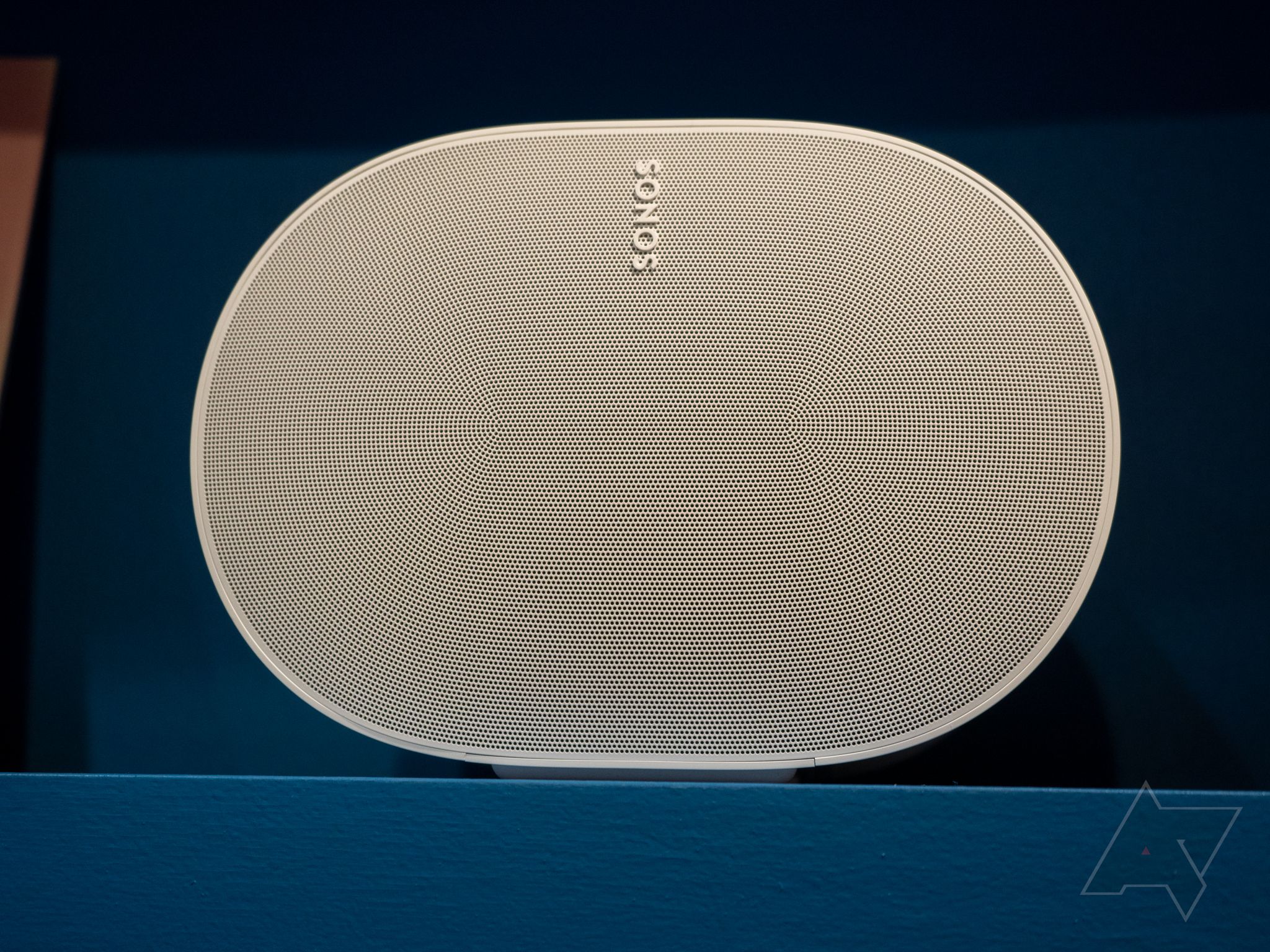
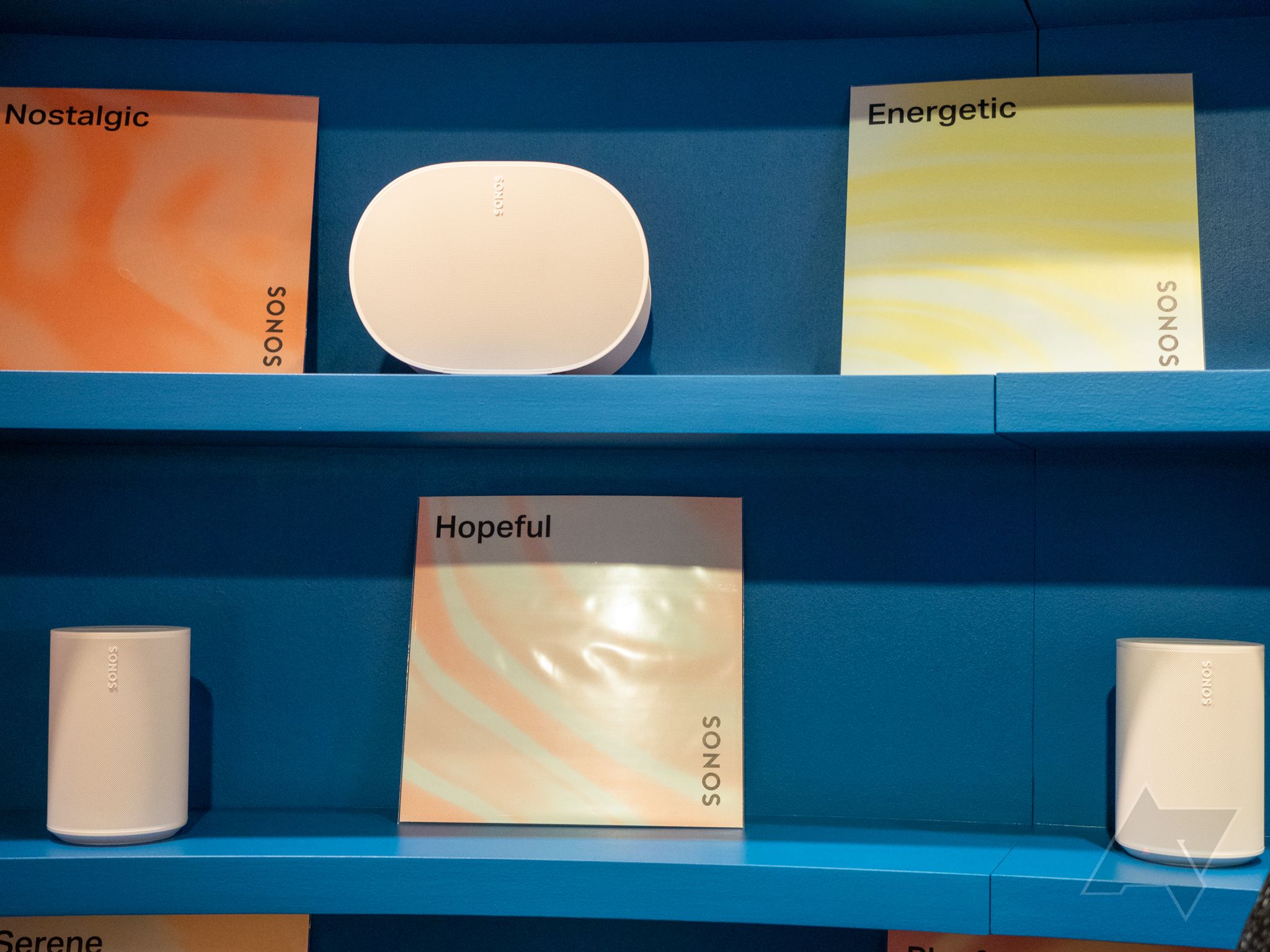
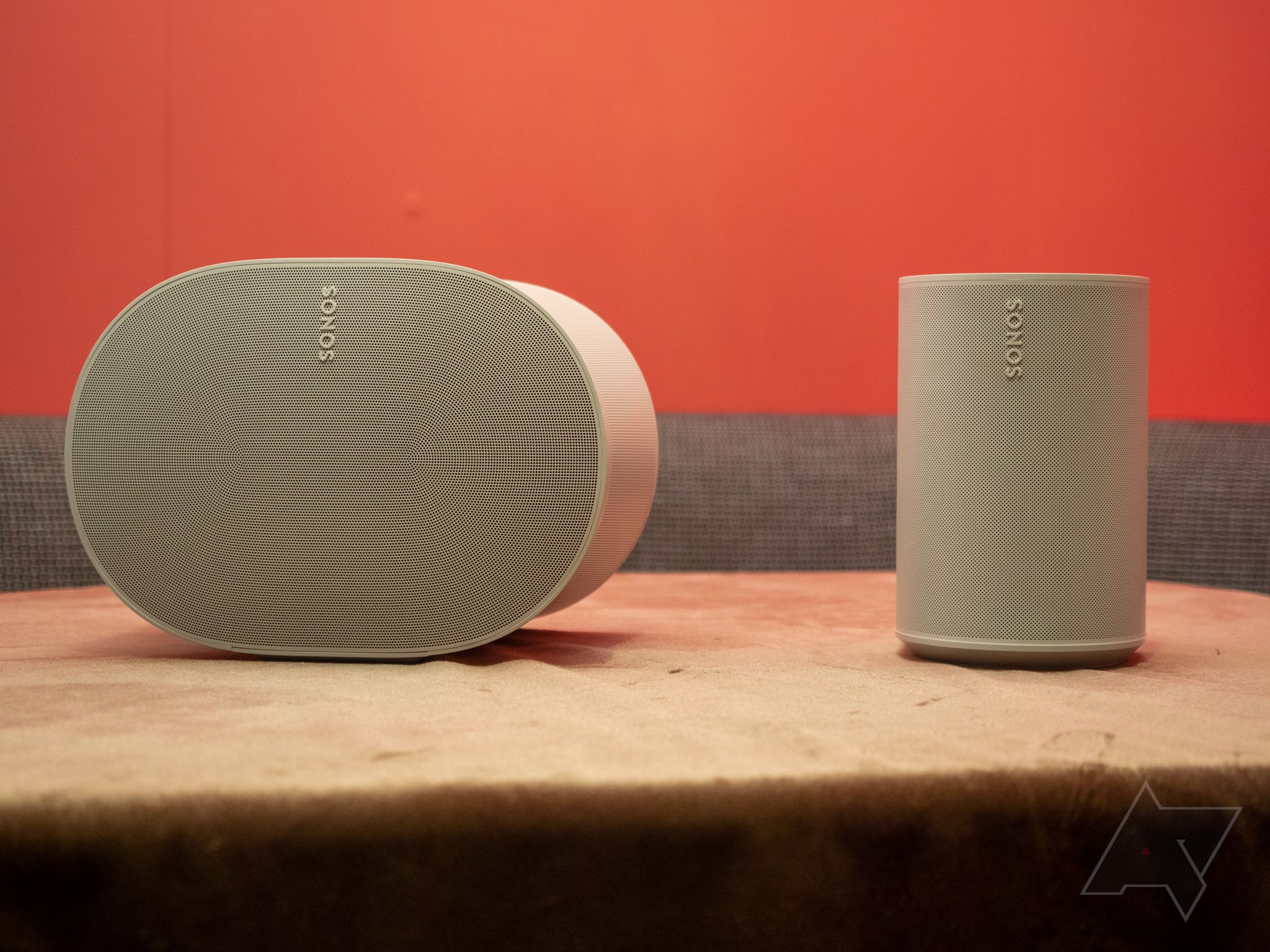
Sonos claims that the six drivers in the Era 300 — four directional tweeters encompassing stereo sides, one front-facing and, new the speaker line, an upward-firing tweeter for height, along with two side-firing woofers — sound better than anything the company has made for a speaker this size, and I'm inclined to agree. I had a chance to listen to the speaker, both on its own and part of a surround system with an Arc as the front, and it's both enveloping, warm, and accurate, as all Sonos speakers tend to be. But that height channel is more than just a spec: it is the lynchpin of the company's new marketing campaign, the reason the Era 300 invokes a break in time, an after whereas everything was before.
This isn't the first Sonos speaker to support Dolby Atmos, but it is the first to support it with a focus on music
While this isn't the first Sonos speaker to support Dolby Atmos and, therefore, spatial audio, it's the first one designed for music playback and not recreating whatever death-defying action scene Tom Cruise is up to in your living room. Sonos claims that it worked with countless audio engineers, offering them the Era 300 as a reference speaker, to master spatial mixes on tracks and albums that support it. I listened to a number of tracks mastered for Atmos using Amazon Music Unlimited and, while none of them sent me careening my head around trying to find the saxophone playing behind my head, the soundstage and scale of the reproduction was impressive for the speaker's size. Still, I was underwhelmed by the speaker's low-end, especially after enjoying for years the Play:5 and Sonos 5, only $100 more and considerably more powerful, produce proper sub-bass in my living room.
The Era 300's remaining trick is a complement to Sonos's recent investment in the living room: its ability to act as a proper Dolby Atmos surround channel when paired with a Beam 2 or Arc soundbar. Because the speaker can output proper height info, if used with a compatible soundbar, and paired with a Sub or Sub Mini, a pair of Era 300s can close the circle on a 5.1.2 Atmos system, though purists will argue that upward-firing tweeters can't actually reproduce the height channel with the same alacrity as a pair of dedicated ceiling speakers. Still, if you're not looking to cut holes in the walls, this is a pretty good, if expensive, next-best-thing.
At just under 10 pounds and just over 10 inches wide, the Era 300 is a substantial piece of kit, and one I'm very much looking forward to reviewing. It will be available in both white and black colorways on March 28th, in a number of countries including the U.S., Canada, the UK and much of Europe and Asia, for $449 USD.
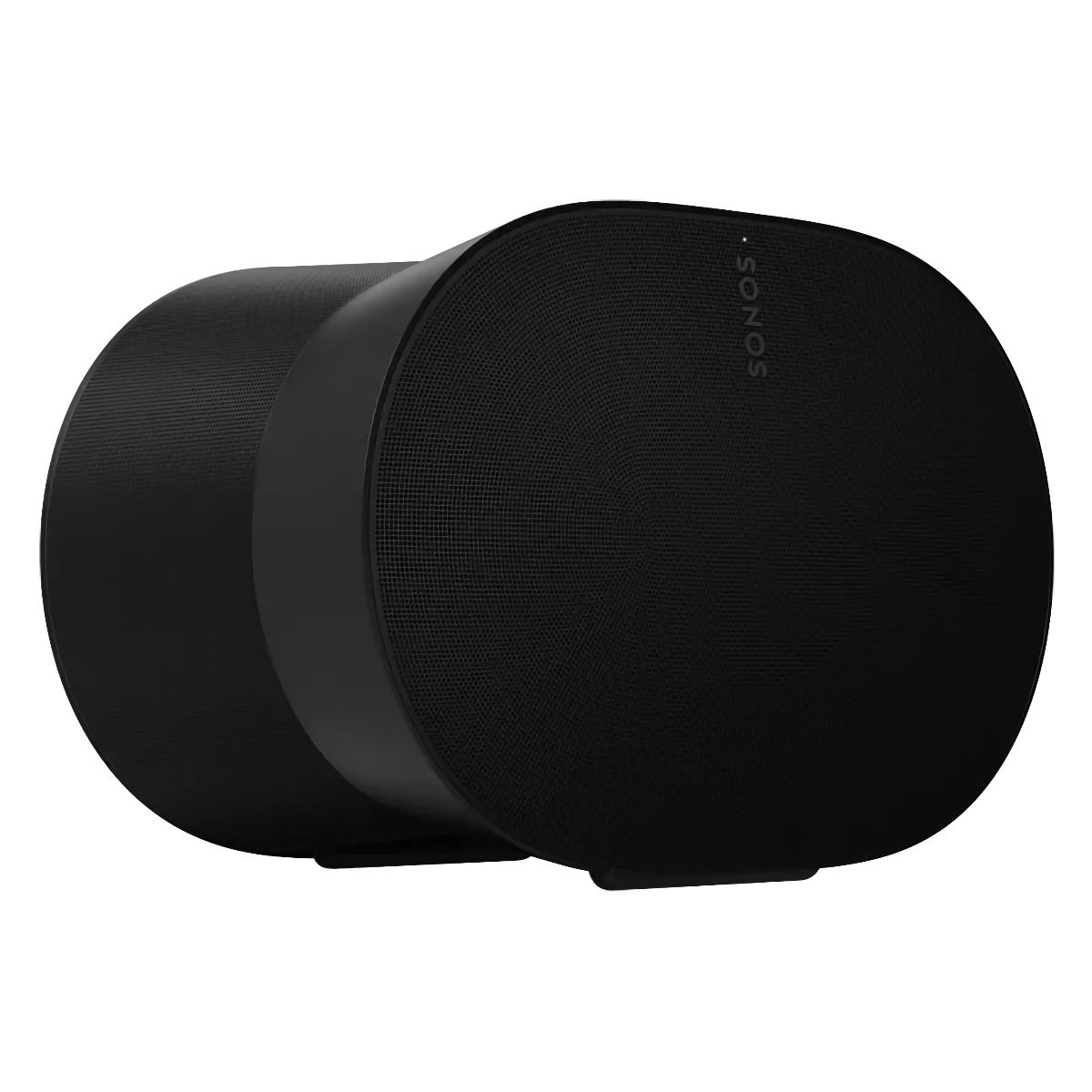
Sonos Era 300
The Era 300 is a big, expensive, stationary speaker that introduces Dolby Atmos support to Sonos's line of music-focused speakers. With four directional tweeters and two woofers, the Era 300 can fill a room with accurate sound that's also warm and super musical. And it also works with spatial audio if you're into that. It's not cheap, but along with line-in and Bluetooth support, it's Sonos's most versatile speaker ever.
Era 100
The Era 100 is considerably cheaper — and less interesting. It's a direct visual and spiritual successor to the Sonos One, which has been around in some form for nearly six years. While it doesn't support spatial audio like its more expensive Era 300 counterpart, it does provide proper stereo playback through two angled drivers positioned on either side of the rounded body, along with a larger woofer that generates considerably more low-end than its predecessor.
Like the Era 300, it supports line-in and Ethernet through an adapter, as well as built-in Bluetooth support and, mercifully, a dedicated pairing button on the back. The 4.44-pound weight lends credibility to its solidity, as all Sonos products are, and it shares its new capacitive volume slider and improved beamforming microphones with its co-announcee.
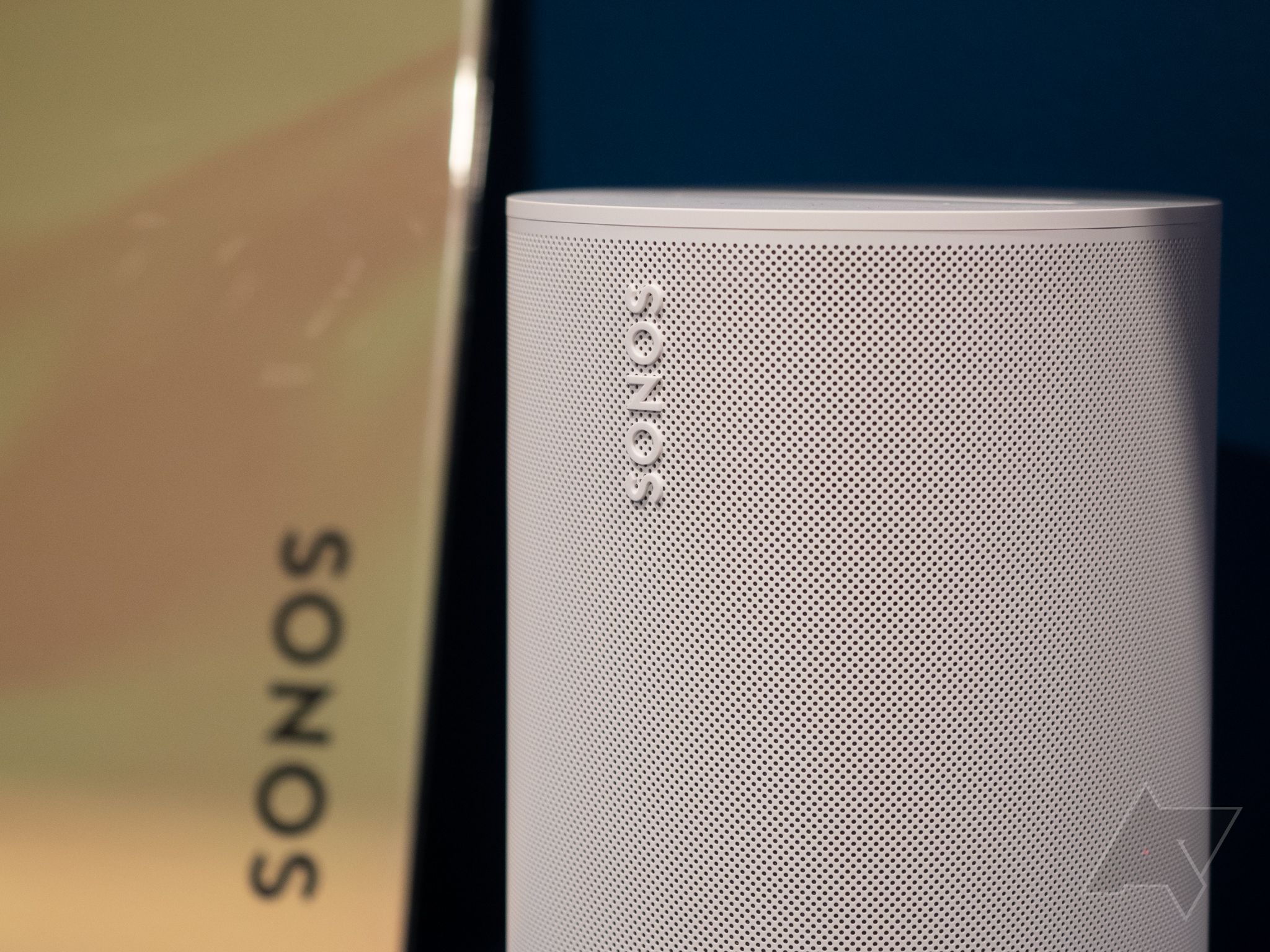
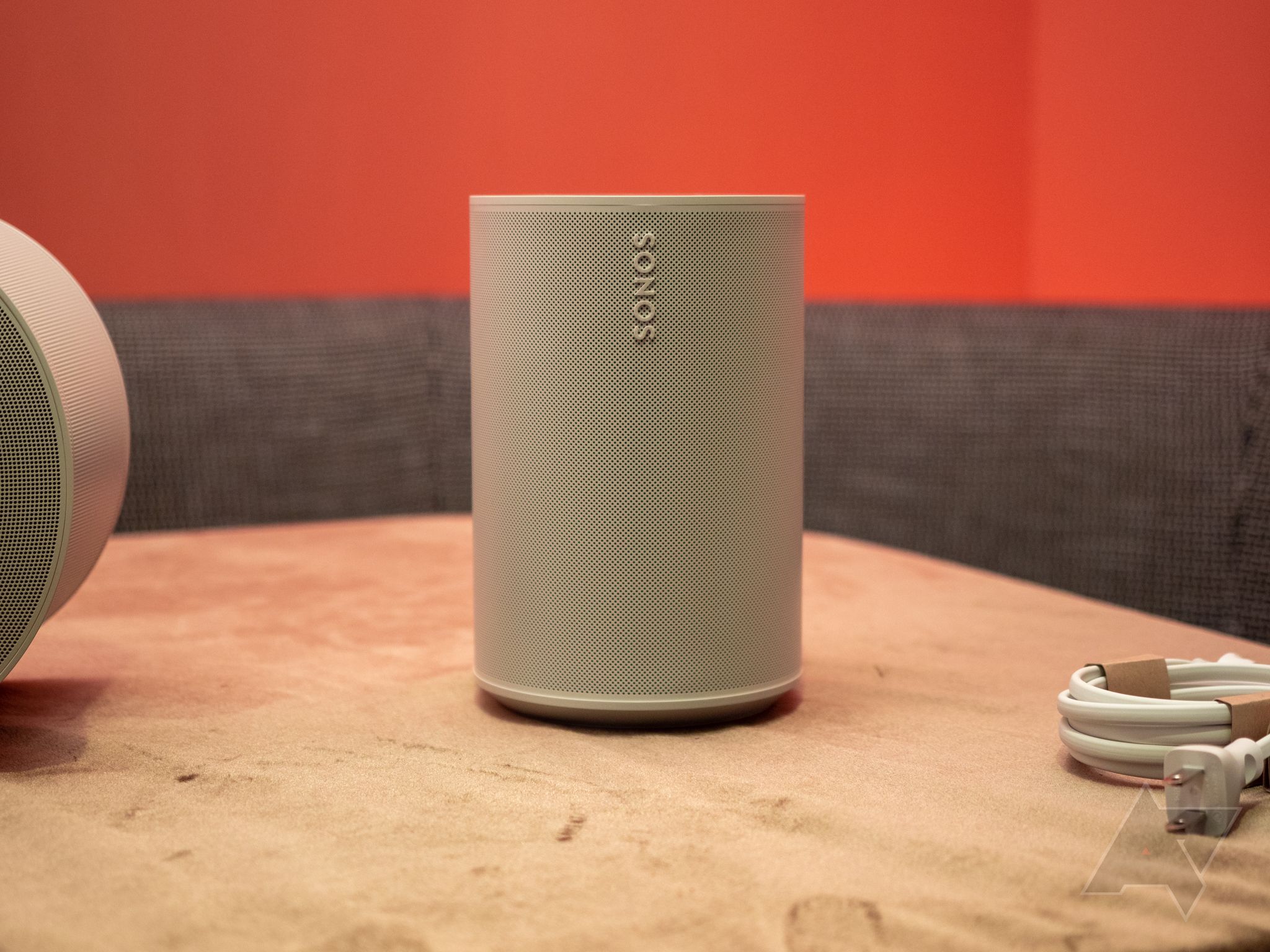
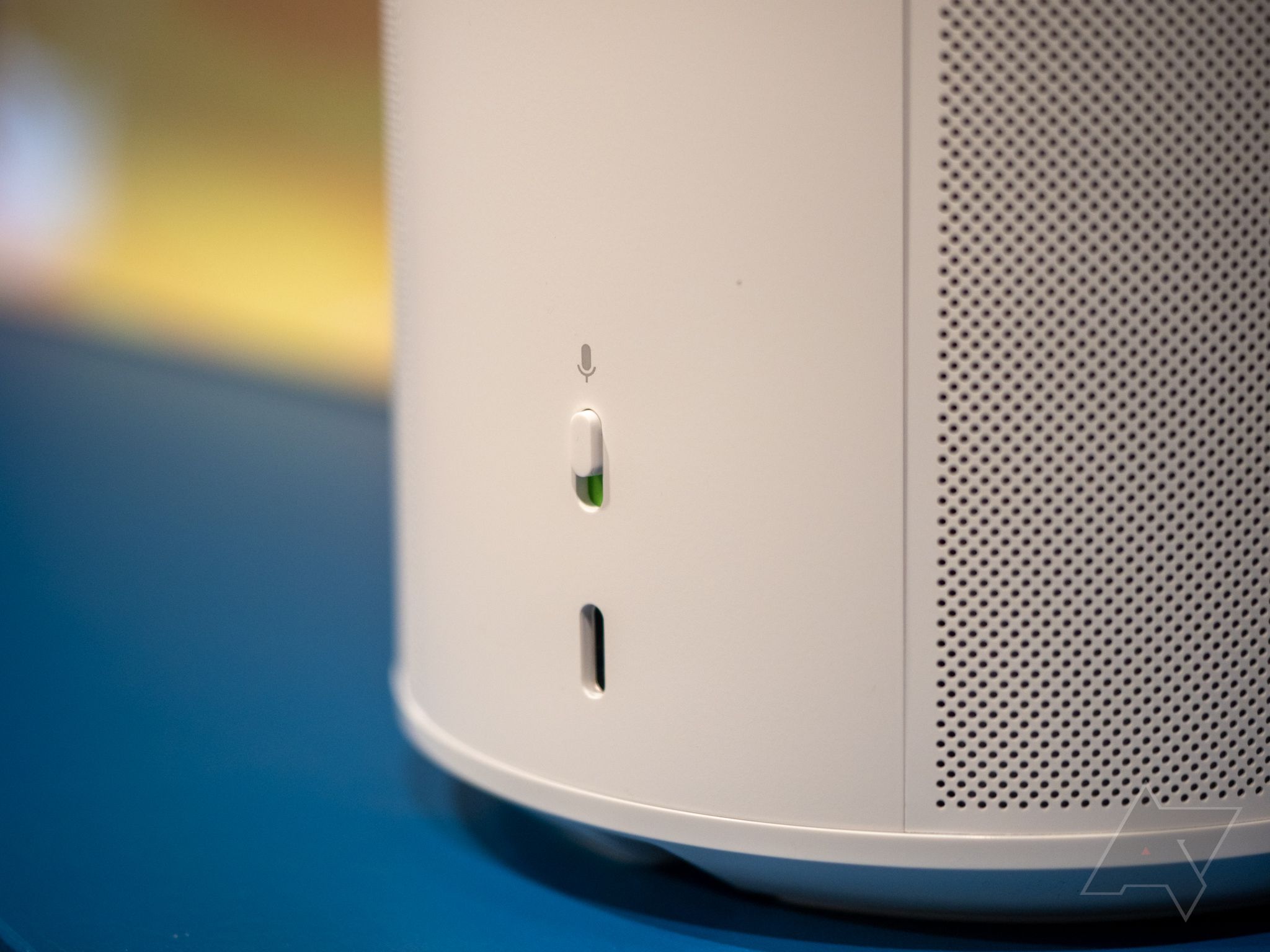
I had considerably less time to listen to the Era 100 during my demo than the 300, but Jeff Derderian, Sonos's VP of Product Program Leadership, assured me that there is a lot more going on inside the speaker than the Sonos One, though it's roughly the same size. For anyone looking to replace their aging Play:1 — I still have a couple kicking around that work just fine — this is going to replace the previous speaker in the company's lineup. There's also Wi-Fi 6 support inside both new speakers, along with Bluetooth 5.0 and the aforementioned AirPlay 2 and Alexa compatibility, all of which were missing from Sonos's pre-S2 lineup.
For $249, the Era 100 appears to be the right price for people looking to get an affordable connected speaker that disappears into most corners of the room, and is not too pricey to rule out buying a pair of them for a decent-sound stereo setup. It'll also be available March 28 in either white or black colorways.
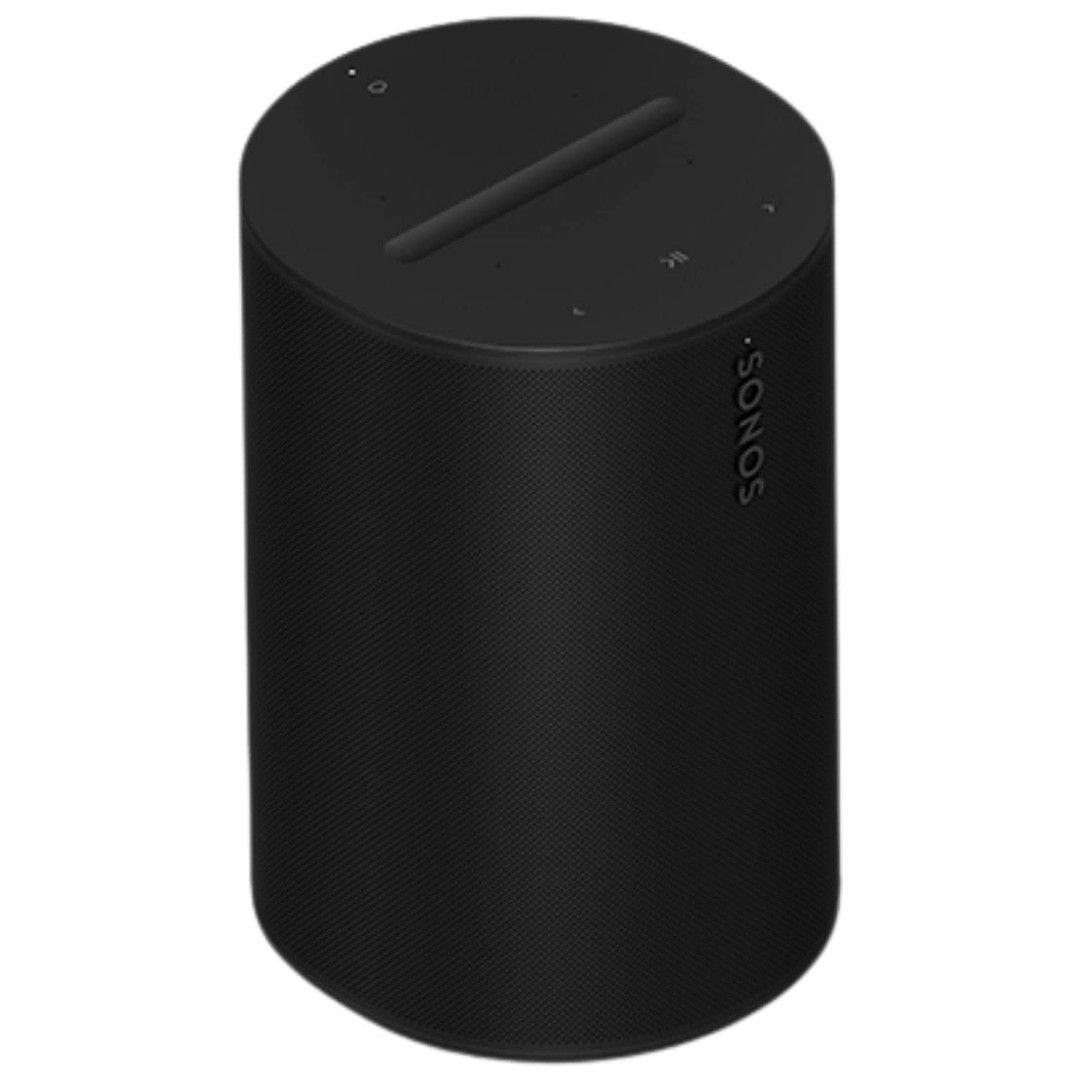
Sonos Era 100
The Sonos Era 100 is the official successor to the ultra-popular Sonos Play:1 and Sonos One speakers, integrating two side-firing speakers and a woofer to improve the sound over its predecessors. With support for Bluetooth and line-in, along with upgraded internals and a slightly higher $249 price tag, this is the upgrade people have been waiting for.
Finally, and this will be welcome news to Android users, both of these speakers support auto-Trueplay, meaning that it's not just iPhone users who can benefit from improved EQ. The speakers leverage the internal microphones to test for reflectivity in a room, and adjust their sound profiles accordingly.

